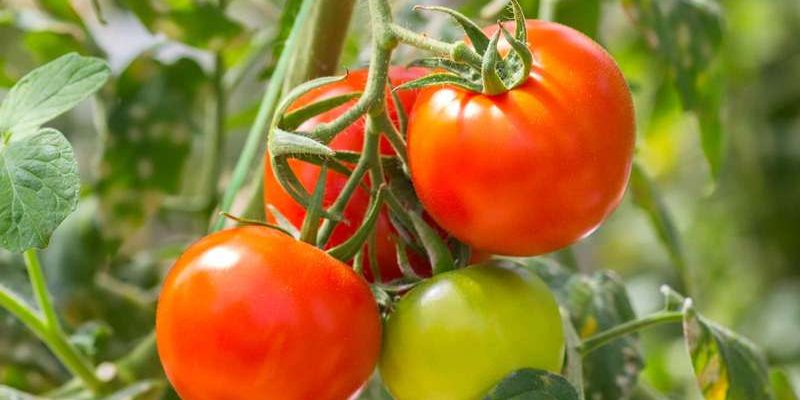The tomato is the edible and commonly known as a tomato plant. The Nahuatl (the language used by the Aztecs) word tomatl gave rise to the Spanish word tomate, from which the English word tomato derived.
The wild species of tomato originated in the Andes Mountains of South America, probably mainly in Peru and Ecuador, and is thought to have been domesticated in pre-Columbian Mexico. The tomato was introduced to Europe by the Spanish in the early 16th century, and the Spanish and Italians seem to have been the first Europeans to adopt it as a food. In France and northern Europe the tomato was initially grown as an ornamental plant and was regarded with suspicion as a food because botanists recognized it as a relative of the poisonous belladonna and deadly nightshade. Indeed, the roots and leaves of the tomato plant are poisonous and contain the neurotoxin solanine.
The Italians called the tomato pomodoro (“golden apple”), which has given rise to speculation that the first tomatoes known to Europeans were yellow. It has been suggested that the French called it pomme d’amour (“love apple”) because it was thought to have aphrodisiacal properties. Some scholars assert, however, that the tomato was at first taken to be a kind of eggplant, of which it is a close relative. The eggplant was called pomme des Mours (“apple of the Moors”) because it was a favourite vegetable of the Arabs, and pomodoro and pomme d’amour may be corruptions of that name.
With an estimated 1400 species, Solanum is the largest genus in the Solanaceae and one of the largest genera of flowering plants. Traditional taxonomists have recognized three subfamilies within the Solanaceae: the Solanoideae, Nolanoideae, and the Cestroideae (D’Arcy, 1979). Hunziker excludes the Nolanoideae (i.e., genus Nolana) from the Solanaceae and expands the number of subfamilies to six: the Solanoideae, Cestroideae, Juanulloideae, Salpiglossoideae, Schizanthoideae, and Anthocercidoideae. In both of these schemes, Solanum is placed within the subfamily Solanoideae, characterized by flattened seeds with curved embryos (Hunziker, 1979). Within the Solanoideae, Solanum belongs to the large and complex tribe Solaneae, which encompasses about 50 genera in the scheme of Hunziker (Hunziker, 2001).
Tomatoes are warm-season crops and are sensitive to frost at any growth stage, so field planting in temperate climates occurs after the threat of frost is past in the spring or transplants are planted and grown under row covers in late spring. Tomatoes produced in temperate climates are also grown in greenhouses and under plastic covered high tunnels to extend the production season. The emergence of greenhouse tomato production has begun to change the shape of the fresh-market tomato industry. Greenhouse tomato production allows producers to grow fresh tomatoes in structures, sometimes using methods of climate control and alternative soils.
Tomatoes and Solanaceae of its family provides many products used by human beings for food, drugs and enjoyment. The family includes edible species such as the potato, tomato, and eggplant (aubergine) and a host of minor fruit crops. Medicinal plants such as deadly nightshade, jimson weed, tobacco, and henbane are the sources of drugs such as atropine, hyoscine, nicotine and other alkaloids. Solanaceae species of horticultural importance include petunia, floripondio, velvet tongue, and butterfly flower. Species such as tomato, potato, tobacco, and petunia are important experimental organisms in genetics and molecular biology.
In 2018, world production of tomatoes was 182 million tonnes, with China accounting for 34% of the total, followed by India, the United States, and Turkey as major producers (table).
References
“Tomato”. Encyclopaedia Britannica.
“Tomato production in 2018, Crops/Regions/World list/Production Quantity (pick lists)”. UN Food and Agriculture Organization, Corporate Statistical Database (FAOSTAT). 2019.





